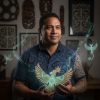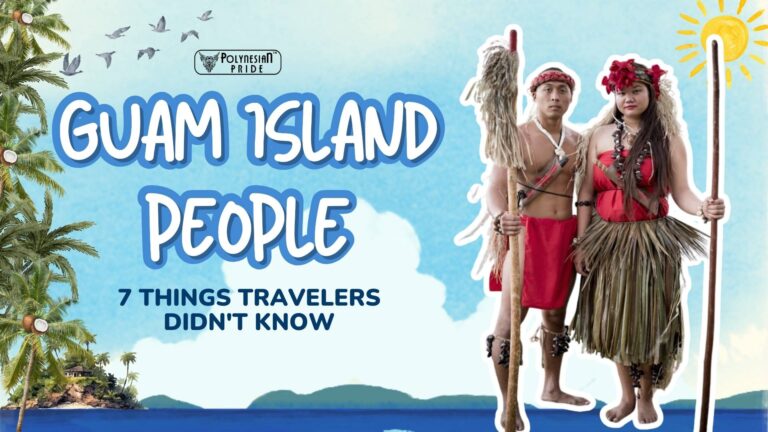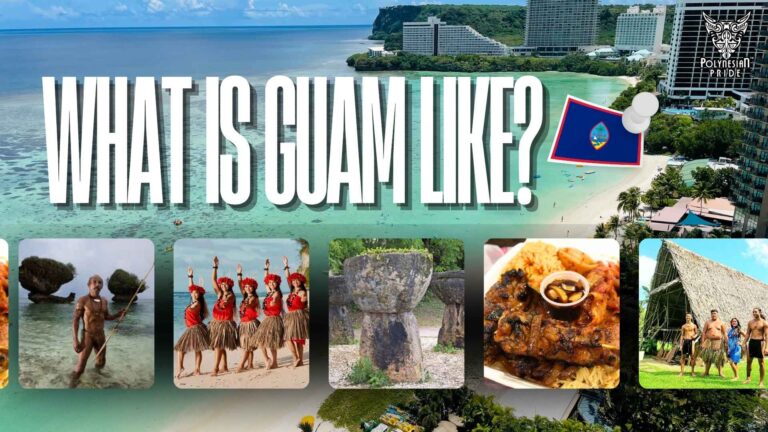Exploring Samoa Family Tree: Unveil The Great Samoan Genetic

INTRODUCTION
Samoa, a stunning archipelago in the South Pacific, is rich in culture and tradition. One of the most integral aspects of Samoan culture is the family, or ‘aiga’. The Samoa family tree is not just a lineage record; it’s a living testament to the island’s history, values, and identity. Let’s dive deep into understanding the Samoa family tree, its cultural significance, and how it shapes the lives of Samoan people.
I. Brief Overview of Samoa
A. Geography
Samoa is a picturesque archipelago in the South Pacific Ocean. It consists of two main islands, Upolu and Savai’i, and several smaller islands. Located halfway between Hawaii and New Zealand, its capital city, Apia, is in Upolu. Samoa has a population of approximately 200,000 people.
B. First Inhabitants of Samoa
The first inhabitants of Samoa arrived about 3,500 years ago during the Lapita migration. These Southeast Asian settlers were part of the Lapita culture and were known for their pottery and navigation skills. They established thriving communities, contributing significantly to the Polynesian culture.
C. Ethnic Groups
About 92.6% of the population is ethnically Samoan. Smaller populations of Euro-Nesian (of mixed European and Polynesian descent) and other ethnicities exist.
D. Languages
Samoan and English are the official languages. Samoan is widely spoken and is the primary language used in everyday communication. In contrast, English is commonly used in government, education, and business.
E. Religion
Christianity is the predominant religion in Samoa, with various denominations including Congregationalist, Methodist, Roman Catholic, and Latter-day Saints. People deeply integrate religious beliefs and practices into Samoan culture and daily life.
E. Notable attractions
There are many fun things to do in Samoa. You can enjoy relaxing on beaches, snorkeling, hiking to waterfalls, exploring cultural villages, surfing, taking boat tours, and indulging in traditional massages. Here are some hot spots in Samoa:
- To Sua Ocean Trench
- Alofaaga Blowholes
- Robert Louis Stevenson Museum
- Piula Cave Pool

II. Context of the Samoa Family Tree
A. History of the Samoa Family Tree
The roots of Samoan genealogy run deep, tracing back to ancient times when oral traditions were paramount. Traditionally, the ancestors passed down Samoan family history through generations via storytelling, chants, and songs. This rich oral tradition has preserved the histories and legends of Samoan families, making genealogy an essential part of their heritage.
B. Samoan Family Structure
In Samoan culture, the concept of ‘aiga’ extends beyond the nuclear family. It encompasses extended family members, sometimes even including close friends. Each member has a distinct role and responsibility, contributing to the family’s well-being and unity. The head of the family, known as the ‘matai,’ is responsible for making decisions and maintaining harmony within the group.
C. Creating a Samoa Family Tree
Building a Samoan family tree starts with gathering information from family members, especially elders with vast knowledge about the family’s history. Utilizing tools such as genealogical charts, family records, and digital databases can aid in compiling an accurate and detailed family tree. Engaging with community projects and consulting with historians can also provide valuable insights.
D. Role of Elders in Samoan Genealogy
Elders are the keepers of wisdom and knowledge in Samoan culture. They are essential in passing down traditions and histories, ensuring the family’s legacy continues. Their stories and teachings are invaluable resources for anyone tracing their Samoan lineage.

III. Cultural Significance of the Samoa Family Tree
The Samoa family tree is more than just a chart of names; it’s a connection to the land and ancestors. Each branch represents a link to the past and a promise for the future. Family trees are crucial in ceremonies such as weddings and funerals, where lineage determines roles and responsibilities. Family ties to specific lands also play a vital role in land ownership as they are passed down through generations.
A. Critical Elements of the Samoa Family Tree
A Samoa family tree typically includes names, titles, and connections spanning multiple generations. Each member’s role within the family, especially the ‘matai’, is prominently featured.
The Samoa family tree often includes information about marriages, births, and significant life events, providing a comprehensive view of the family’s history.
B. Case Studies of Prominent Samoan Families

Examining notable Samoan family trees can offer insight into Samoa’s cultural and social dynamics. Families such as the Tamasese and Malietoa dynasties have played significant roles in Samoa’s history, contributing to its political, social, and cultural landscape.
These case studies highlight the interconnectedness of Samoan society and the importance of preserving these histories.
C. Impact of Christianity
The arrival of missionaries in the 19th century brought significant changes to Samoan society, particularly in family dynamics and the Samoan family tree. Christianity introduced new norms such as monogamy, altering traditional polygamous practices. The emphasis on the nuclear family replaced the extended family model.
At the same time, written records like Family Bibles became important for documenting lineage. Despite these changes, traditional family unity and respect for values endure alongside Christian practices, creating a unique blend in Samoan culture.

IV. Interrelation of Polynesian Genealogy
Samoan genealogy, encompassing the intricate network of the Samoa family tree, is intimately connected with other Polynesian cultures, forming a rich tapestry of shared heritage and migration patterns. The ties between Samoan, Tongan, and other Polynesian family trees run deep, reflecting centuries of cultural exchange and interconnectedness.
Understanding these connections is essential for appreciating the broader picture of Polynesian ancestry and the Samoa family tree. By tracing the interwoven paths of migration and cultural diffusion, we gain deeper insights into the collective history and identity of the Polynesian people. These interrelations enrich our understanding of Polynesian genealogy, highlighting our shared heritage’s diverse yet interconnected nature.

V. Modern Influences on Samoa Family Trees
A. The Impact Of Migration
Today, migration has spread Samoan families across the globe, making the task of tracing genealogy more complex. Many Samoans now live in countries such as New Zealand, Australia, the United States, and beyond. This dispersion has introduced challenges in maintaining cohesive family records and connections across distances.
B. Digital Tools and Online Databases
However, modern technology has brought new solutions to these challenges. Digital tools and online databases have revolutionized documenting and sharing family histories. Websites dedicated to genealogy, such as Ancestry.com and FamilySearch, allow Samoans to create detailed family trees, store records, and collaborate with relatives worldwide.
C. Social Media and Genealogy Groups
Social media platforms and specialized genealogy groups connect dispersed family members across various countries. These platforms enable sharing stories, photos, and documents, helping preserve and pass down family histories.
D. DNA Testing Services
DNA testing services like “23andMe” and “MyHeritage” have become popular, offering more profound insights into ancestral roots and connections that might have been lost over generations.
E. Bridging the Gap
By leveraging these modern tools, Samoans can bridge the gap between past and present, ensuring their rich heritage is preserved and celebrated, no matter where they may be.

VI. Preserving Samoan Genealogy
Preserving the Samoa family tree and Samoan genealogy is essential for maintaining cultural identity and heritage. Methods to ensure this include recording oral histories, digitizing records, and encouraging younger generations to engage with their family history. Community efforts, such as genealogy workshops and cultural festivals, are vital in preserving and celebrating Samoan ancestry.
VII. Challenges in Tracing Samoan Genealogy
One of the main challenges in tracing Samoan genealogy is the reliance on oral traditions, which can lead to discrepancies and gaps in records. Additionally, the impacts of colonization and migration have disrupted traditional ways of maintaining family histories. Common obstacles include incomplete records, name changes, and the loss of knowledge over generations.
Community Efforts
Community projects and initiatives are instrumental in documenting and preserving Samoan family trees. Collaborations between families, historians, and genealogists help create comprehensive records. Efforts such as the Family Search website provide platforms for sharing information and connecting with distant relatives.

CONCLUSION
The Samoa family tree is a rich tapestry of history, culture, and identity. It serves as a bridge between the past and the future, connecting generations and preserving the essence of Samoan heritage. Understanding and documenting these family trees is vital for maintaining the cultural fabric of Samoa.
FAQs
What is ‘aiga’ in Samoan culture?
In Samoan culture, ‘Aiga’ refers to the extended family, which encompasses relatives by blood, marriage, and even close friends. All of whom share responsibilities and roles within the family unit.
How do I start tracing my Samoa family tree?
Start by gathering information from family members, especially elders. Use genealogical charts, family records, and online databases. Engaging with community projects and consulting with historians can also be helpful.
What are some common challenges in Samoan genealogy?
Challenges include reliance on oral traditions, incomplete records, changes in names, and the impact of migration and colonization, disrupting traditional ways of maintaining family histories.
How has modern technology influenced Samoa family trees?
Modern technology, such as digital tools and online databases, has made it easier to document and share family histories, helping to bridge the gap caused by migration and loss of traditional records.
Why is it fundamental to preserve Samoan genealogy?
Preserving Samoan genealogy is essential for maintaining cultural identity, heritage, and the continuity of traditions and values. It ensures that future generations understand their roots and connections.

As an arts and traditional crafts specialist rooted in pe‘a (Samoan tatau), kapa making, and ceremonial carving, I’ve nearly 10 years of experience in fine art and its cultural significance. Experience the beauty of the traditional art of tattooing through my latest publication.
Inspire Your Style
Contact me:
Email: [email protected]
Tel: +685 77 23699






